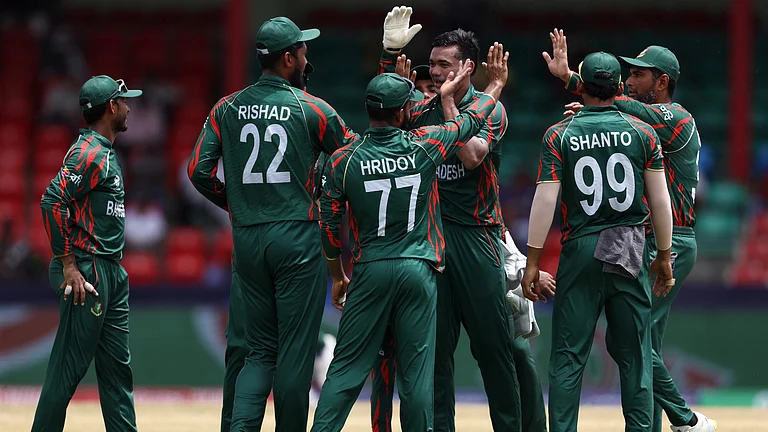When the Bharatiya Janata Party (BJP) recently reshuffled the members of its parliamentary board and replaced former party president Nitin Gadkari and Madhya Pradesh Chief Minister Shivraj Singh Chouhan with lesser-known leaders, it was bound to raise a few questions in political circles.
Gadkari is considered to be the only senior leader in the party who speaks his mind out while Shivraj is not believed to be close to the party leadership at the moment. Significantly, they have not been replaced by any political heavyweight. So, is the exit of the two veteran leaders from the party’s highest decision-making body an indicator of the ever-increasing dominance of its top leadership?
When Prime Minister Narendra Modi and Union Home Minister Amit Shah became dominant in the party in the post-2014 scenario, there were some murmurs. But the party, under their leadership since then, has pursued almost all agendas of the Sangh Parivar, not just its own, such as the Ram temple in Ayodhya, Article 370 and Uniform Civil Code and many others, which had to be kept on the backburner during the Atal Bihari Vajpayee government.
Its Hindutva agenda also became dominant across the country with the inclusion of its stories in the textbooks. Consider a class VIII history book in Karnataka which mentions that “Veer Savarkar used to come out of his secluded cell on a nightingale’s wings to see his motherland.” (Savarkar, by the way, remained locked in a cell in the Andaman Cellular Jail that did not even have any light vents, although he was released on an apology after a ten-year sentence).
Apart from furthering the agenda of the Sangh Parivar, the BJP also became dominant in this period in many parts of the country like never before. Today, the BJP claims to be the largest party in the world with crores of members. The party turned into an electoral machine, and despite lagging behind in several elections, especially in Congress-backed states, it managed to form its governments.
At present, it runs coalition governments in 11 states either on its own or with its allies. Above all, no other leader can match the popularity of Narendra Modi today. However, recent opinion polls have indicated a significant decline in Modi's popularity. The decline is so sharp that his popularity is believed to come down to half a point compared to 2016. The figures of people's disenchantment with the government on several fronts such as economy, inflation and unemployment are going up significantly.
Of course, the economic slump is the fallout of the prolonged lockdowns during the Covid-19 pandemic and also of the ongoing Ukraine war, which has created a crisis in the international market this year. But even before the epidemic in 2020, the economy started taking a plunge due to demonetisation and implementation of GST. It once plummeted to minus 23 points during the pandemic that was not seen anywhere else in the world.
In spite of worrying trends, the BJP still seems to be going strong, and the reasons behind it are not inexplicable. The Opposition remains fragmented and the pressure of Central agencies such as CBI and ED is further weakening it. It is a different matter that the BJP has to bear the consequences by losing its allies. As of now, no major regional party remains in the NDA after the Janata Dal-United (JDU) in Bihar quit and Shiv Sena split in Maharashtra. Political observers believe it has caused unease in a section of the BJP but the Modi-Shah duo seems to be following the strategy of expanding the party by breaking the Congress and regional parties.
For example, on July 29-30 in Patna, party president J.P. Nadda declared that all the regional parties will cease to exist and only BJP shall remain. It did not go down well with the JD-U which soon joined the grand alliance of RJD-Congress-Left after snapping its alliance with the BJP in Bihar.
According to sources, there is also a sense of unease in the RSS over the BJP’s strategy of expansion by breaking other parties at the cost of neglecting its own cadres. The situation is such that more than one-third of the BJP MPs in the Lok Sabha are said to be from other parties, while the number of such legislators in the states, is even higher. It is also said that no special discussion takes place in the Union Cabinet, and the meetings of the party's parliamentary board are not held properly. Besides, the decision of the final selection of candidates for elections is also taken at the top level. There are speculations that the RSS contact in the BJP, B.L. Santosh rarely talks with top leaders. In such a situation, political pundits wonder, what difference it makes if someone is in the Parliamentary Board or not?
Such conditions are probably creating unease, which is reflected in the statements of leaders like Gadkari or, more often than not, Rajnath Singh. Yet, Modi remains in an unmatched position. Also, no leader who broke ranks with the BJP or the Sangh Parivar in the past has been able to make a mark on his own. From Balraj Madhok to Kalyan Singh and Uma Bharti, there are several such examples.





















